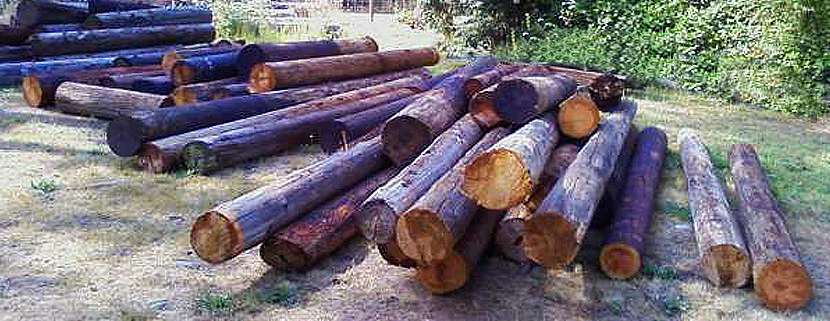Power From The Power Poles
My Grandfather Amasa Oliver Netzley was 68 years old when I was born; some would say this is retirement age. I was 22 years old when he sold his Almond orchard farm and moved into a house in the city. He, however, promptly planted a bunch of almond trees in the back yard.
He did a lot of what one would say are crazy things. For example, he was on PG&E’s list of people taking old creosote-soaked power poles. His idea? Cheap firewood! He would split them into quarters then saw off appropriate lengths to fit into a fireplace.
He built himself a radial saw out of wood with an old electric motor. With today’s radial saws, the blade moves through the wood with the wood being held tight and still. He, however did just the opposite! The thirty or so inch blade with gigantic teeth remained stationary. The table supporting the quartered beams was suspended on a springlike mechanism that moved the wood into the blade. Very dangerous! No safety guard of course and since he had grandsons to spare, he would invite us out to the farm to hold the long end of the stick, while he pushed the wood into the blade.
The problem was communication out at the end of the stick. Did he want us to push it further or draw it back? Where he was standing at the saw-blade he would swing his forearm back and forth at the elbow with his hand in a vertical position. It was a puzzle that we could not discern and what we had to do was watch his thumb. The end of his thumb was the shape of a sharpened pencil. As a carpenter, he had run it through the jointer so many times that even his fingernail was narrow. So how to read his thumb we wondered? If it was almost vertically even with his fingers, we were to push more? If it moved slightly towards the palm we were to pull? All of this going through our minds while looking sideways at his hand at 20 feet or more.
As firewood, this is the most stinky, terrible, fast and hot burning wood. It filled the house with fumes of creosote and was so hot as to burn the chimneys and ultimately the whole house. Today, it is illegal to burn this wood and even the wood recyclers reject it. In our current environment, many of our discards are poisonous to us and the planet. It is my hope that we will learn how to recycle everything and not leave poisons behind. This includes the materials that we use for restoring the teeth.
Over the years, I have eliminated many materials in my practice of dentistry that are either toxic to my patients, or to my team and myself. In today’s world, there are so many proprietary dental dentifrices on the market that are not only toxic, but cause allergic reactions. I spend a lot of time explaining to my patients to use simpler time-tested materials to maintain their dental health.



